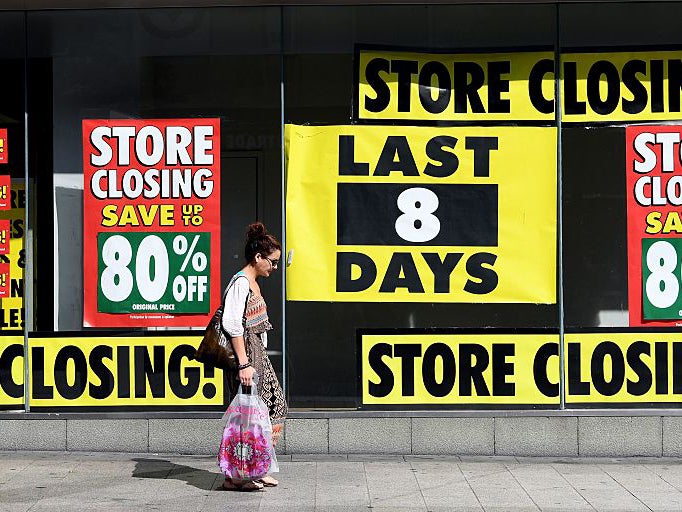Insolvencies are set to rise sharply – by how much is for Sunak to decide
Intervention by the chancellor could be the difference between an unusually high spring tide and a full-scale tsunami, writes James Moore


What next for the economy? Much depends on how the government phases out the support it has provided.
The economic statistic making all the noise at the end of last week was the official GDP number, which showed that UK plc shrank by 2.6 per cent in November.
It was nasty, but not as nasty as most forecasters had feared, with growth in construction and manufacturing partially offsetting a nasty slide in the dominant service sector, an inevitable consequence of lockdown. The CBI said Covid-proofing businesses helped and the general consensus was “phew”.
That mightn’t have been the case had a bit more attention been paid to a rather less well reported stat, namely the number of corporate insolvencies recorded in December, perhaps because this is usually a “lagging” indicator. Insolvencies take time to work their way through the system.
Corporate insolvencies increased sharply, by 37.8 per cent to 1,228 in the last month of the year when compared to November’s figure of 891. They were also 9.2 per cent higher than the 1,125 recorded in December 2019.
However, if you set December aside, insolvencies ran at an unusually low level over the course of 2020. The total came in at just 12,646.
To give that figure some context, R3, the insolvency practitioners trade body, pointed out that in each of the three prior years (2019, 2018, 2017) there had been more than 17,000. Even in 2016, a relatively quiet one, more than 16,000 companies went to the wall.
Why such a low number given that 2020 was otherwise the year from hell (TM)? The obvious answer is unprecedented government intervention.
The Treasury spent billions of pounds propping up UK plc and the companies that make it up. It paid the wages of furloughed staff through the job retention scheme (JRS). It offered cheap loans, and a business rate holiday. It deferred VAT, helped out with rent. Grants were made available to the hardest-hit firms.
These, and other measures, collectively built a dam, sheltering thousands of struggling firms behind it. The December figures released by the Office for National Statistics suggested that it’s starting to crack.
Chancellor Rishi Sunak started to get twitchy about propping up doomed firms in the summer as he announced plans to wind down the first iteration of the JRS with a view to replacing it with a job retention bonus, payable for every furloughed employee still on employers’ payrolls at the end of this month.
Sunak said it had been designed to support viable firms and to sustain viable jobs rather than offering “false hope” to those who were doomed. The chancellor, in essence, didn’t want to be throwing good money after bad by propping up firms destined to go under.
History shows that he ultimately had to extend the furlough scheme, which is now due to run until April, as the lockdown that was lifted to “save summer” was reimposed.
The job retention bonus was not well designed – some firms said they wouldn’t take it while critics (including this one) said a lot of money would get wasted because it would inevitably end up getting paid to firms that didn’t need the help.
But the annual insolvency statistics suggest that Sunak’s concerns about propping up doomed firms weren’t without merit. Roughly 5,000 that would have gone bust in an ordinary year did not, most likely as a result of the state’s support.
It’s clear that this year is going to see an unusually high level of insolvencies whatever Sunak does next. The stop-start imposition of lockdowns mean that some firms that would have been perfectly viable are running out of gas, while many of the businesses that would have gone down were it not for the Treasury’s support will when it is withdrawn. December’s figures may presage a flood.
For the sake of the economy as a whole, it would clearly be best for their numbers to be kept as low as possible. Sunak can do that if he addresses the cliff edge looming in spring when the furlough scheme and others are due to come to an abrupt end. He has to find a way to ease the incline and allow for a softer landing.
Next year’s numbers will be nasty even if he does, but we’re talking here about the difference between an unusually high spring tide and a full-scale tsunami.



Join our commenting forum
Join thought-provoking conversations, follow other Independent readers and see their replies
Comments